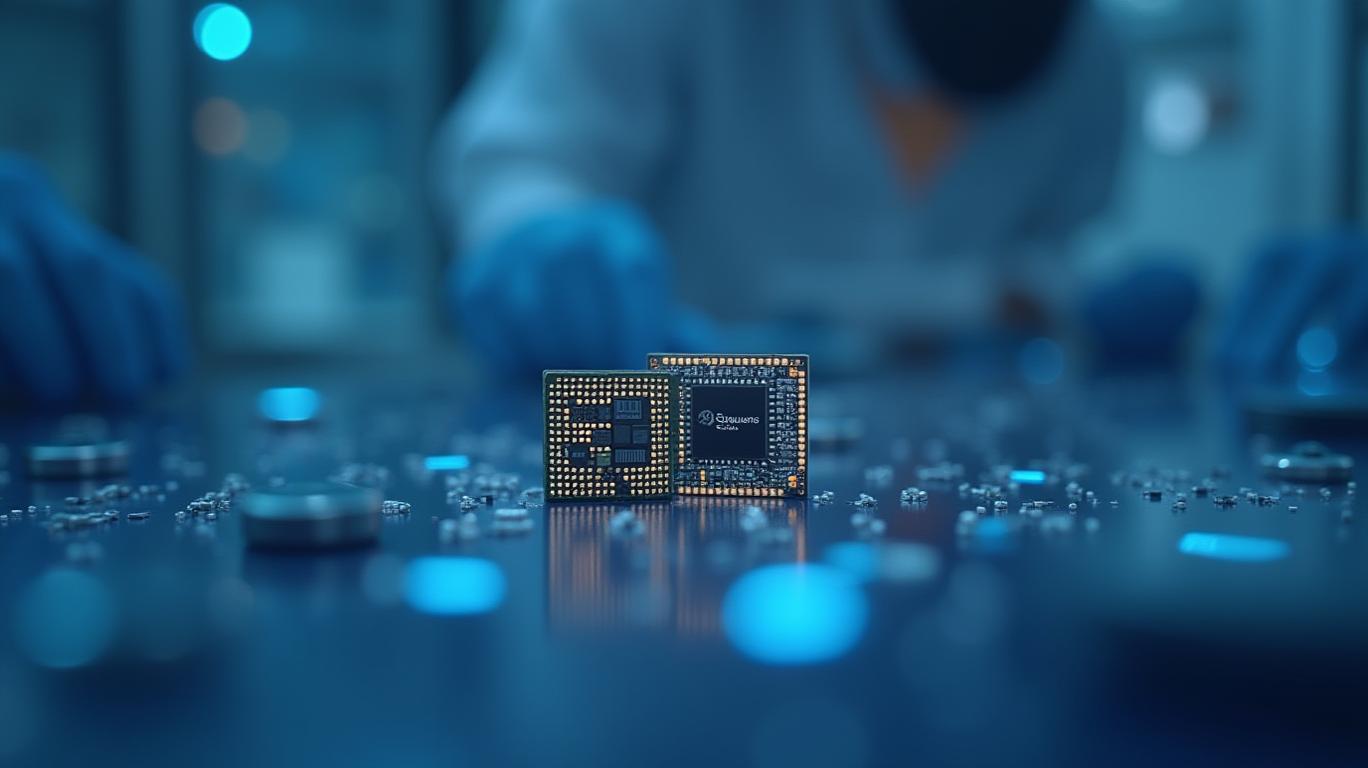Sequans Communications: Navigating Strategic Growth Amid IoT Opportunities
Sequans Communications (SQNS) has filed its 2024 annual report on Form 20-F, revealing a pivotal year marked by revenue growth, strategic partnerships, and a clear roadmap to operational breakeven by 2026. The report underscores the company’s shift from a licensing-dependent model to a product-driven IoT semiconductor leader, though challenges such as seasonal volatility and cash management remain critical to its success.
Financial Performance: Growth Anchored by Qualcomm
Sequans reported full-year 2024 revenue of $36.8 million, a 9.5% increase from 2023, driven by a surge in product sales and the landmark $200 million Qualcomm deal. The Qualcomm agreement, finalized in September 2024, enabled Sequans to repay $85 million in debt, reducing liabilities and improving liquidity. While licensing revenue dipped in Q4 2024 due to reduced Qualcomm deliverables, product revenue nearly doubled sequentially to $4.7 million, signaling a strategic pivot toward hardware sales.
The Qualcomm deal also generated a $152.9 million net gain, propelling non-IFRS net profit to $77.5 million for 2024. However, operating cash flow turned negative at $19.4 million, reflecting increased R&D investments and working capital adjustments. By year-end, Sequans held $62.1 million in cash, down from $173.6 million post-Qualcomm but still sufficient to fund near-term operations.
Strategic Initiatives: IoT Dominance Through Innovation

The Qualcomm deal’s proceeds are being reinvested into 5G/4G IoT product development, including the Monarch 2 (for 4G LTE Cat 1bis) and Calliope 2 (for LTE-M/NB-IoT) chips. These products target high-growth IoT applications such as smart metering and industrial automation. The December 2024 acquisition of ACP Advanced Circuit Pursuit A.G. further strengthens Sequans’ expertise in analog/mixed-signal design, accelerating the development of 5G eRedCap chips—a critical standard for low-power, high-connectivity IoT devices.
CEO Georges Karam emphasized that 2024 was “pivotal” for Sequans, enabling it to “secure the future of its 4G business and focus on 5G IoT leadership.” The strategic focus on IoT aligns with a $1.1 trillion market expected by 2030, per Grand View Research, positioning Sequans to capitalize on demand for cellular IoT solutions.
2026 Breakeven Target: Feasible or Overly Optimistic?
Sequans aims to achieve operating income breakeven by 2026, supported by margin improvements and product revenue growth. Management projects Q1 2025 revenue of $7–8 million, with product sales contributing ~50%, despite seasonal weakness. The breakeven timeline relies on:
1. Cost Discipline: Reducing operating expenses to offset higher R&D spending.
2. Product Momentum: Scaling Monarch 2 and Calliope 2 shipments, which are expected to dominate revenue by 2025.
3. Cash Burn Reduction: The company aims to cut cash outflows from operations, though Q4 2024’s $2.1 million non-IFRS loss highlights execution risks.
Historical data provides cautious optimism: Sequans’ gross margin expanded to 75.5% in 2024 (vs. 71.7% in 2023), and its 2025 R&D pipeline is robust. However, breakeven hinges on outpacing competitors like Telit and u-blox, which also target IoT connectivity.
Risks and Challenges
- Seasonal Volatility: Q1 2025 revenue is expected to drop 30% from Q4 2024 levels, reflecting cyclical demand in IoT deployments.
- Liquidity Pressure: The cash position of $62.1 million must fund operations until product sales scale, especially if licensing revenue continues to decline.
- Regulatory and Market Risks: IoT adoption depends on 5G infrastructure rollouts and geopolitical factors, such as spectrum allocation policies.
Conclusion: A High-Reward, High-Risk Play
Sequans’ 2024 results and strategic moves position it as a contender in the IoT semiconductor space, backed by a $200 million Qualcomm windfall and R&D-led innovation. Its 2026 breakeven target is achievable if product revenue growth meets expectations—Monarch 2 and Calliope 2 shipments could add $10–15 million annually by 2025, per management estimates.
However, investors must weigh this potential against near-term risks: seasonal dips, cash burn, and execution hurdles in scaling production. The stock’s 12-month performance (see visualization) reflects this tension—volatility persists despite structural tailwinds.
For long-term investors focused on IoT’s growth, Sequans offers asymmetric upside. But for those wary of operational execution risks, the company remains a speculative play until breakeven is achieved. As Karam noted, “The Qualcomm deal secures our future”—now the proof lies in the products.
Final Note: Investors should monitor Q1 2025 results (due April 2025) for clues on revenue resilience and cash flow trends.

Comments
No comments yet